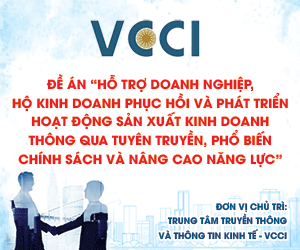Equity funds record breakthrough gains as VN-Index surges
If in 2024, the main taste of open-end funds is tech stocks, then in 2025, the fund portfolio will contain banking, construction materials, retail, and securities stocks.
.jpg)
VN-Index closed the month at 1,661.7 points — down 1.2%.
After surpassing the 1,700-point threshold in early September, the VN-Index soon entered a consolidation phase around its peak and closed the month at 1,661.7 points — down 1.2% from the start of the month.
Yet, the broader picture remains bright: in Q3 alone, the VN-Index climbed more than 285 points, or 20.6% compared to the end of Q2, marking one of the strongest quarters in five years. This market rally has been a windfall for open-ended equity funds with long-term, professionally managed portfolios.
According to data from Fmarket, Vietnam’s largest mutual fund platform, the top-performing open-ended funds in Q3 included: BVFED (25.52%), MAGEF (23.96%), DCDS (21.13%), VINACAPITAL-VEOF (19.11%), TCGF (18.86%), UVEEF (18.86%), MAFEQI (18.27%), KDEF (18.24%), EVESG (17.61%), and DCDE (17.1%).
In reality, much of this year’s market gains have been driven by large-cap stocks, while many fundamentally strong tickers have yet to realize their potential. This divergence has forced open-ended funds to maintain strict risk management while staying nimble enough to seize opportunities in leading sectors. While technology was the “flavor of the year” in 2024, fund portfolios in 2025 are largely concentrated in banking, alongside construction materials, retail, and securities.
A key takeaway is how flexibly funds have adapted to volatility. When U.S. tariffs hit, active funds raised their cash ratios and rotated into domestically driven sectors benefiting from fiscal policy. Once trends became clearer, they quickly reinvested in core blue-chip stocks, sustaining returns. Notably, in August, when the market neared short-term highs, funds took timely profits from major banking stocks such as MBB, ACB, TCB, VIB, and VPB, cutting exposure to preserve gains and prepare for new opportunities.
Over the first nine months of 2025, open-ended funds maintained strong performance, with BVFED leading the market with a 36.4% gain. Funds that outperformed during this period were typically large-cap (blue-chip) equity funds or those employing dynamic portfolio management strategies — effectively capturing the VN-Index recovery wave. However, a fund’s success is not measured solely by beating the index, but by its risk management discipline and long-term vision. Most funds with consistent 3–5 year strategies have now reached a breakout phase of performance.
Fmarket data shows that many funds with a 5-year track record have far outperformed the VN-Index. From September 2020 to September 2025, the index rose 82.9%, while some funds nearly doubled that return: VINACAPITAL-VESAF (175.41%), SSISCA (163.31%), DCDS (161.94%), VINACAPITAL-VEOF (155.68%), and VCBF-BCF (141.84%).
Outlook for the Final Months of 2025
As the year-end approaches, macroeconomic indicators are turning more favorable. Experts note that the Fed’s rate cuts, easing exchange-rate pressure, and recovering credit growth are creating a supportive backdrop for investors to accumulate assets at reasonable valuations for long-term goals.
According to Dương Kim Anh, Head of Investment at VCBF, “There remain ample opportunities in companies with solid fundamentals and long-term prospects, despite short-term volatility driven by external factors. This is the time for patient investors to hold positions, await improving earnings, and ride the recovery.”
She added that sectors like banking, which have led gains since early 2025, still have room to grow thanks to stable credit, improving asset quality amid a real estate rebound, and digital transformation driving cost efficiency. “Banks that balance growth and risk management remain particularly attractive investments,” she noted.
Vietnam’s stock market has also been officially upgraded under FTSE’s classification. In the event of a successful reclassification, HSBC projects that this could attract up to USD 10.4 billion in long-term foreign inflows from index-tracking and active funds.
Nguyễn Hoài Thu, CFA, Deputy CEO of VinaCapital, highlighted three core factors underpinning Vietnam’s market appeal:
“First, the upgrade to emerging market status could unlock substantial foreign capital inflows. Second, both the economy and corporate earnings are maintaining strong growth momentum. Third, the Government’s ‘Reform 2.0’ agenda is driving deep structural transformation, accelerating approvals for infrastructure and real estate projects, and laying a solid foundation for long-term economic expansion.”
With these tailwinds, analysts consider this a “golden window” for investors to accompany Vietnam’s market transformation — particularly through professional channels such as open-ended funds.
From another perspective, foreign investors have net sold around USD 3 billion since the start of the year, largely due to cyclical divestments. Over a 10–15-year horizon, many early-stage institutional investors are reaching natural exit points, making room for new capital inflows. These dynamics suggest renewed foreign interest and sustained upward momentum for Vietnam’s stock market heading into year-end.








